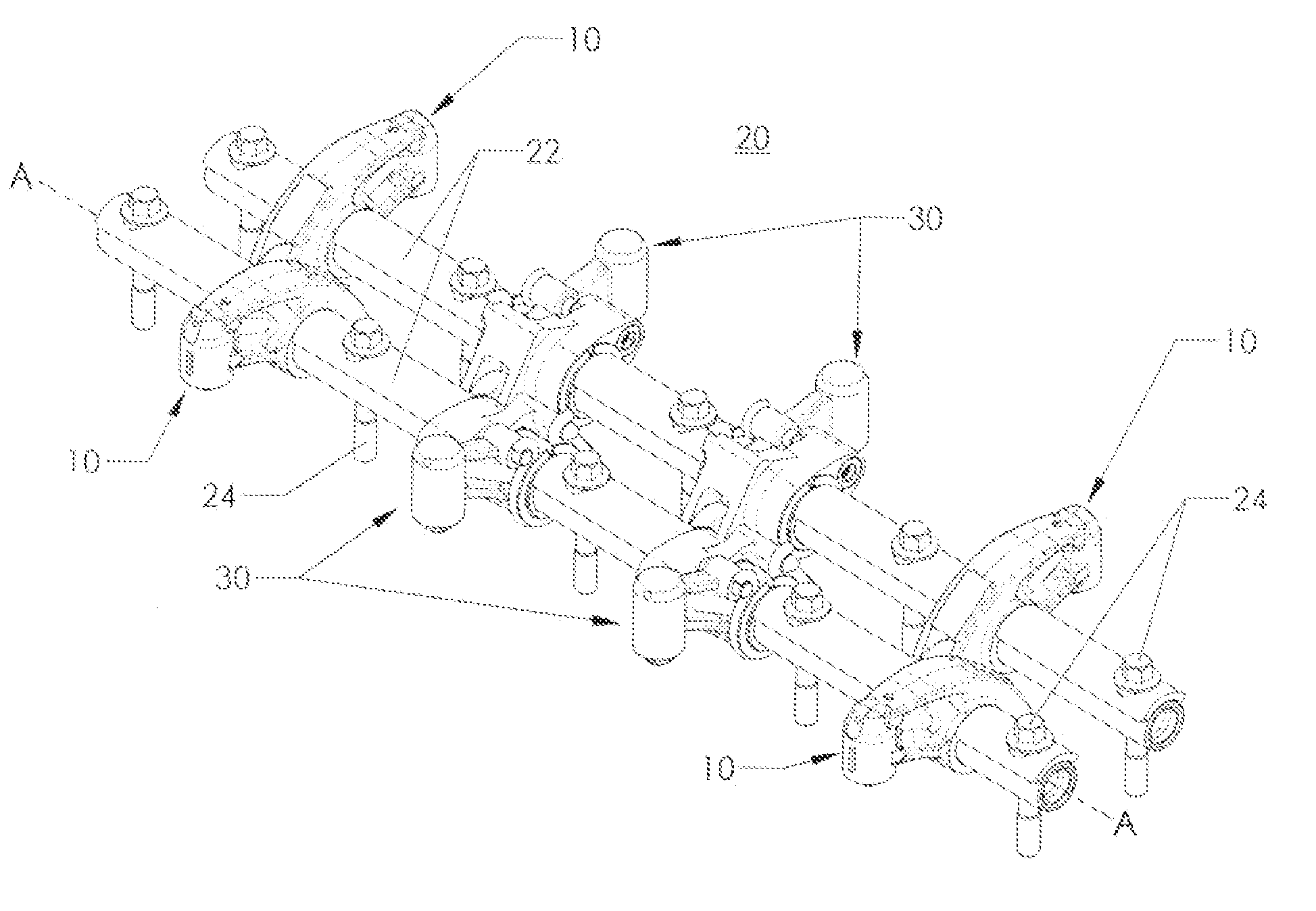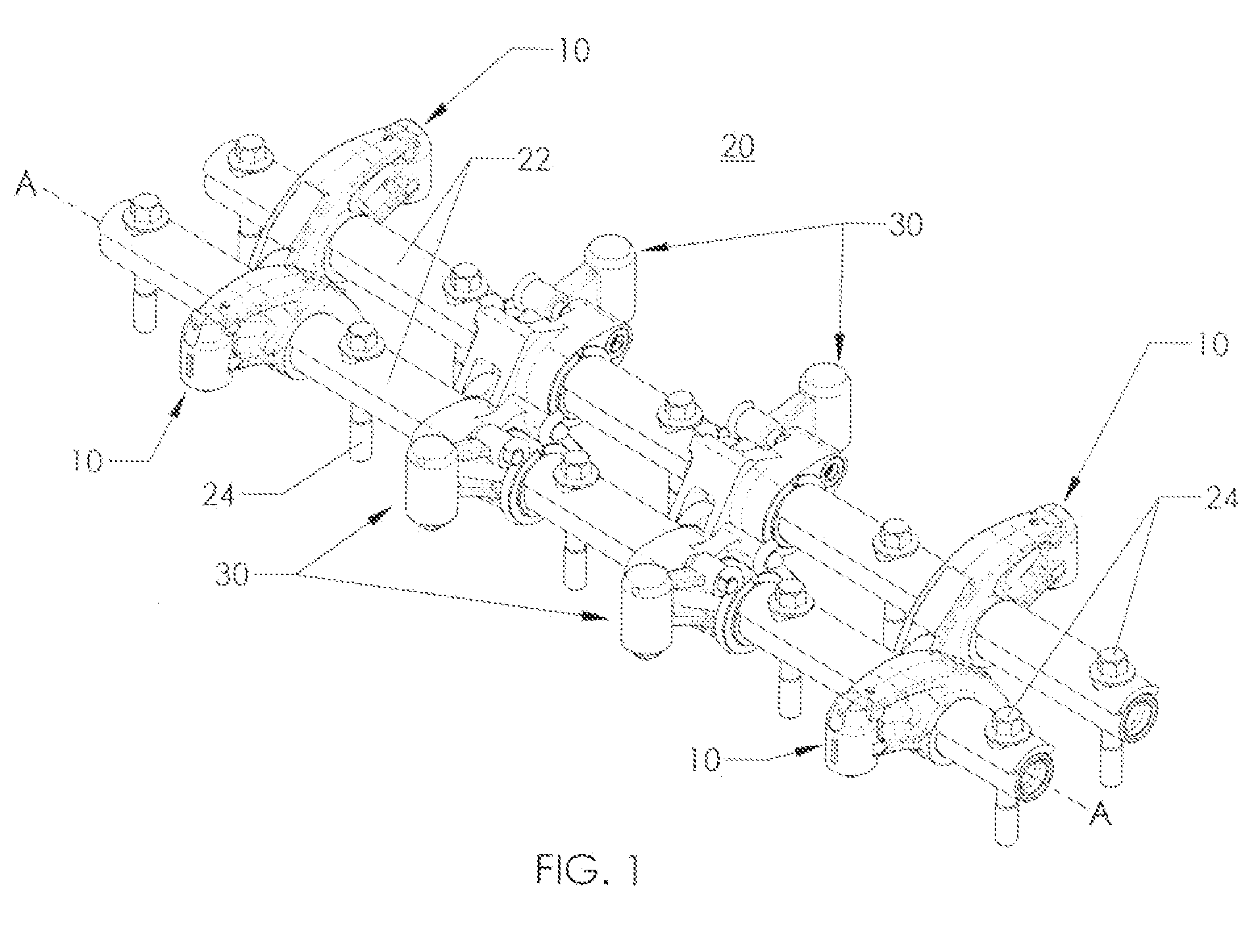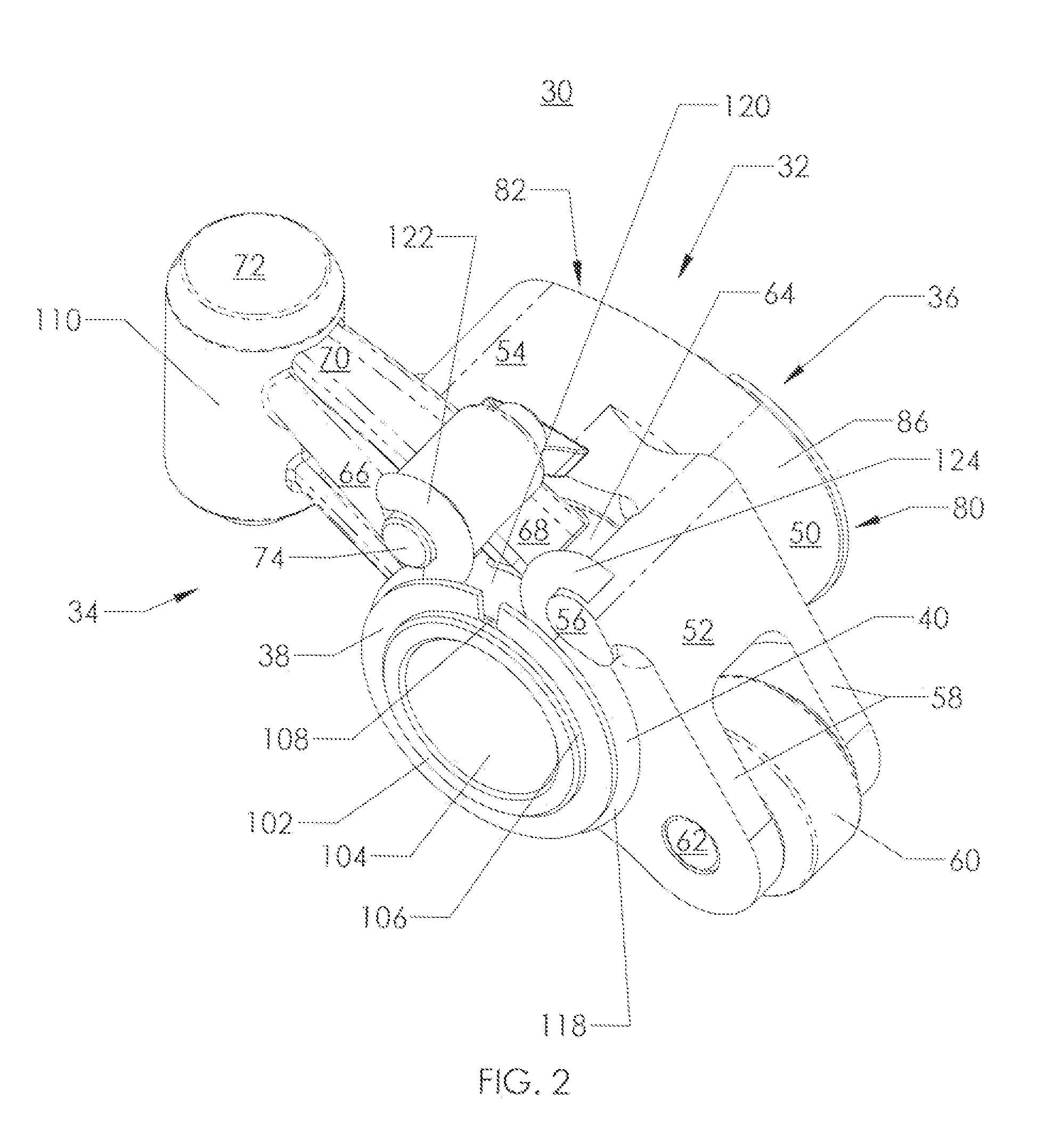Valve deactivation device
a deactivation device and valve technology, applied in the direction of valve arrangements, machines/engines, output power, etc., can solve the problems of inability to provide the needed structure, deactivation devices are expensive to produce and assemble, and cannot meet the needs of the user, so as to avoid objectionable noisy operation, increase the hertzian contact stress, and ensure the effect of smooth operation
- Summary
- Abstract
- Description
- Claims
- Application Information
AI Technical Summary
Benefits of technology
Problems solved by technology
Method used
Image
Examples
Embodiment Construction
[0020] In the mechanism of the invention, the cam follower and valve actuator sections of the rocker arm are not independent of the rocker shaft and as noted above comprise three forms, each creating a rocker arm assembly which is in turn mounted on the rocker shaft for free rotation about it.
[0021] In the first form, the rocker arm assembly comprises the valve actuator section and cam follower section are mounted on and secured to a tube. In the second form, the valve actuator for the rocker arm assembly is created by a tube element onto which the cam follower section is mounted and secured thereon. In the third form, the cam follower section for the rocker arm assembly comprises a tube element onto which the valve actuator section is mounted and secured thereon.
[0022] It is necessary to create a rocker arm providing control of both (a) the lateral clearance between the two rocker arm sections, and (b) the clearance or mechanical lash between the locking pin in one section and th...
PUM
 Login to View More
Login to View More Abstract
Description
Claims
Application Information
 Login to View More
Login to View More - R&D
- Intellectual Property
- Life Sciences
- Materials
- Tech Scout
- Unparalleled Data Quality
- Higher Quality Content
- 60% Fewer Hallucinations
Browse by: Latest US Patents, China's latest patents, Technical Efficacy Thesaurus, Application Domain, Technology Topic, Popular Technical Reports.
© 2025 PatSnap. All rights reserved.Legal|Privacy policy|Modern Slavery Act Transparency Statement|Sitemap|About US| Contact US: help@patsnap.com



